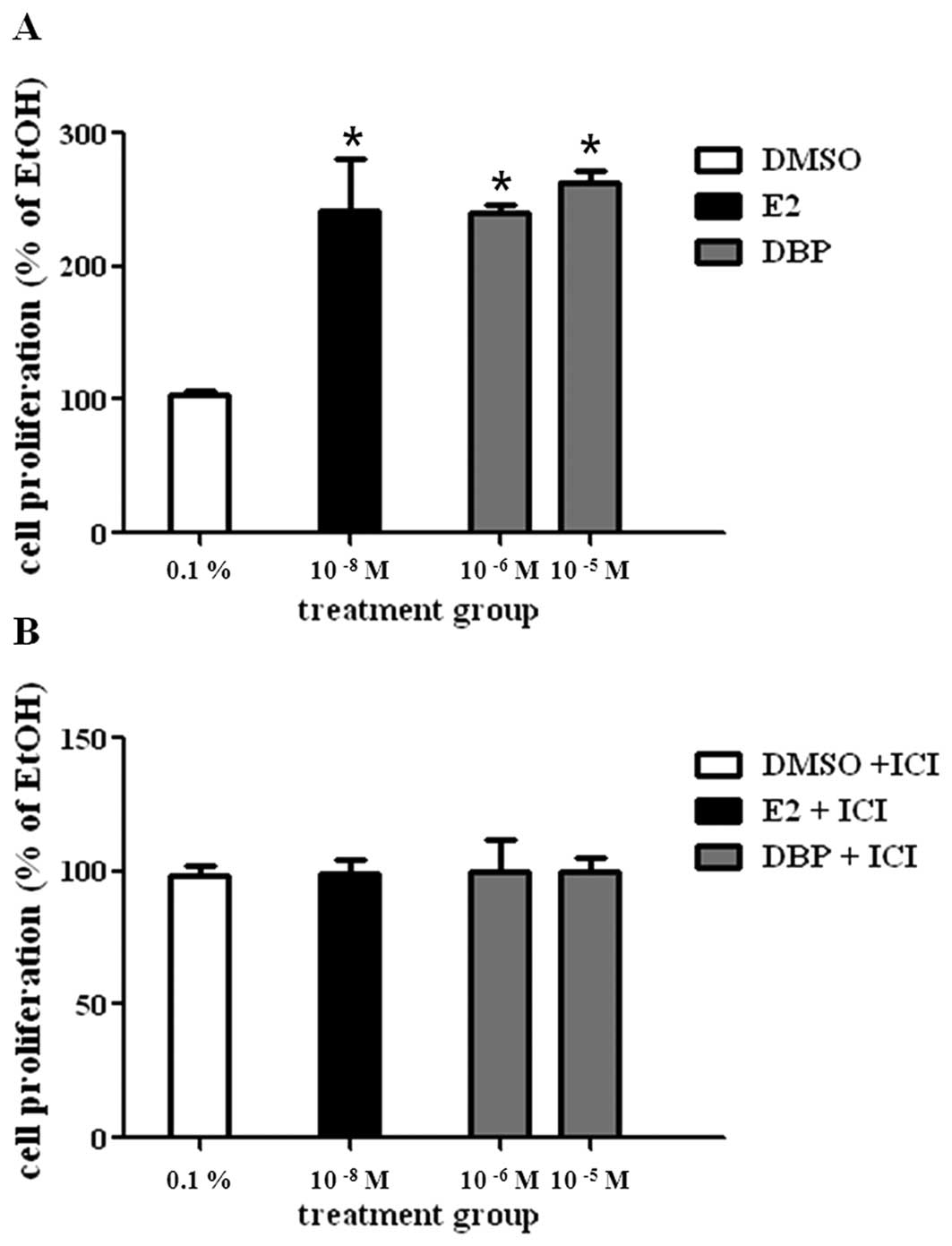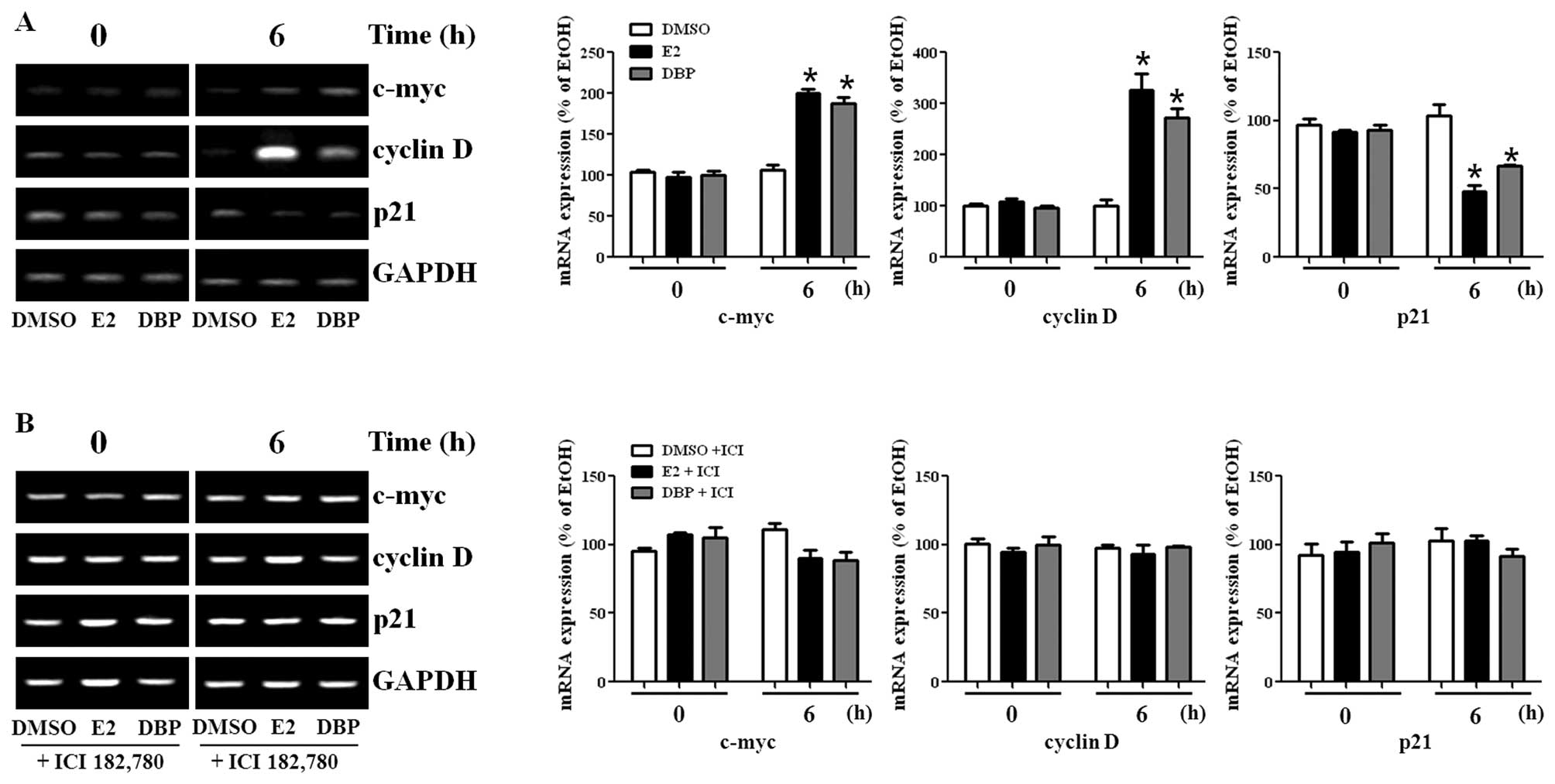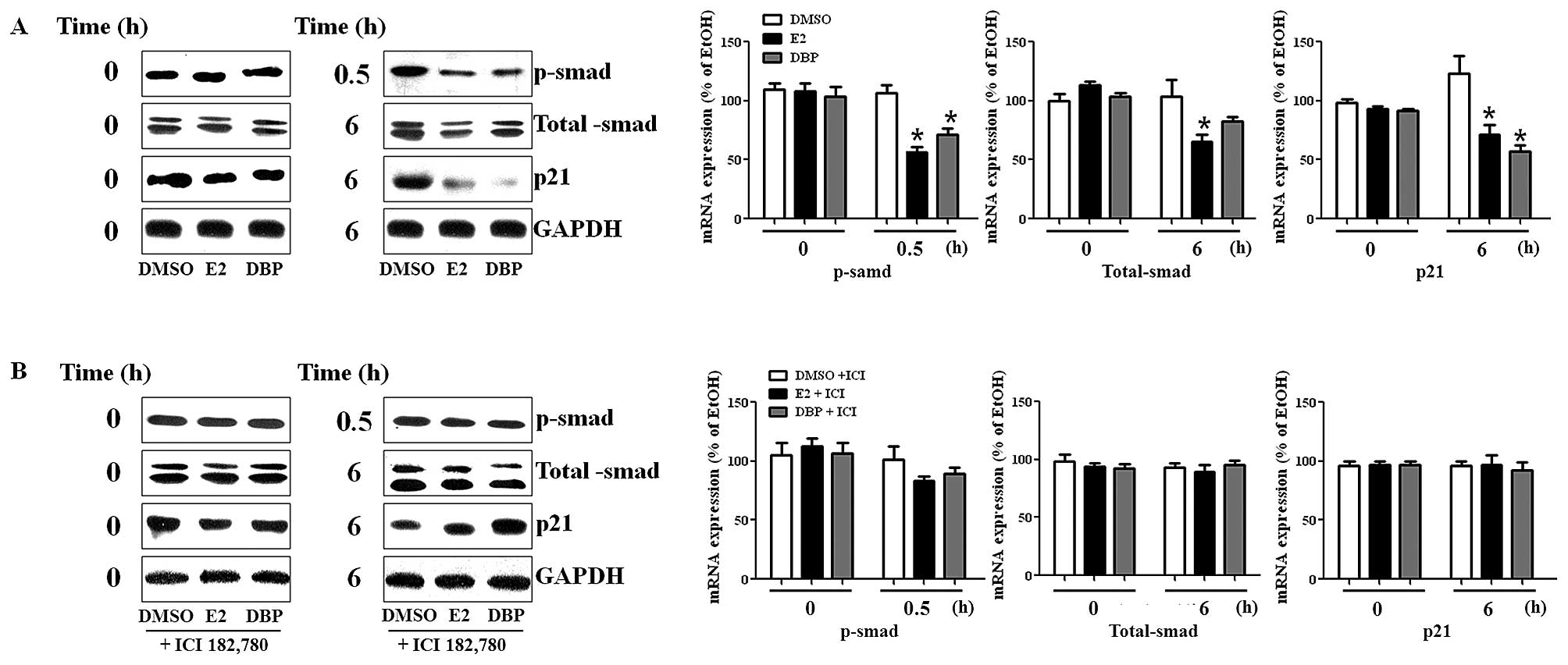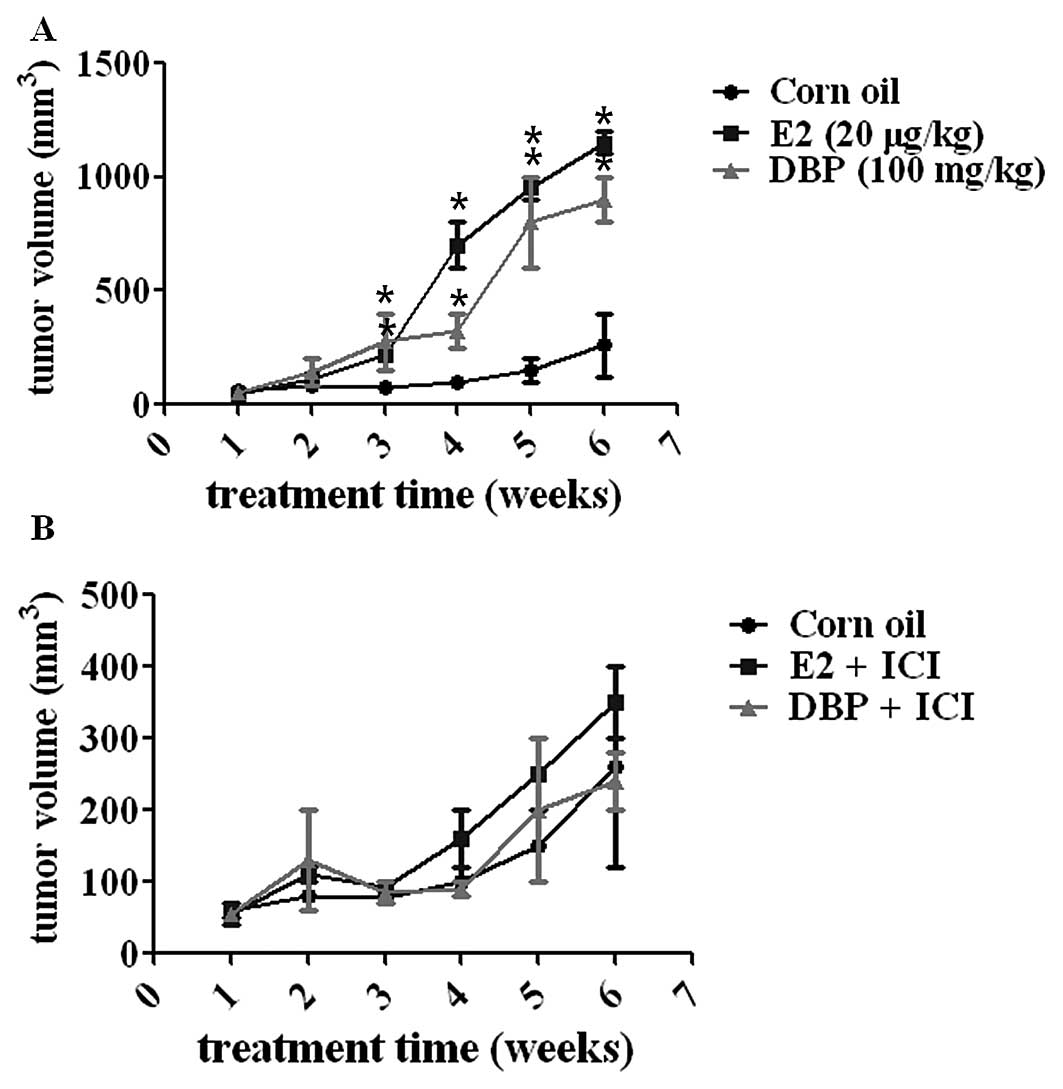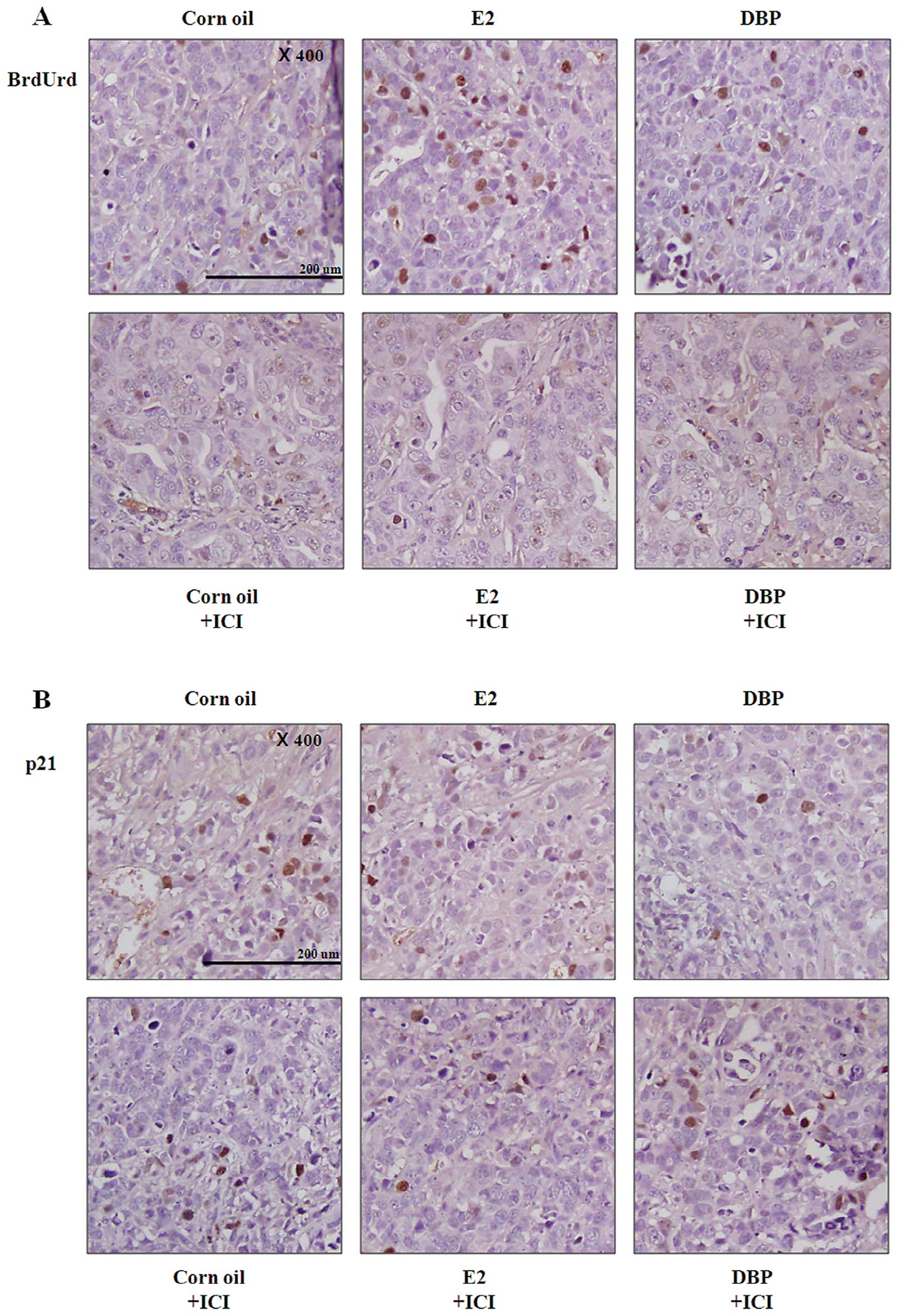|
1
|
Parnes HL, House MG and Tangrea JA:
Prostate cancer prevention: strategies for agent development. Curr
Opin Oncol. 25:242–251. 2013.PubMed/NCBI
|
|
2
|
Powers GL and Marker PC: Recent advances
in prostate development and links to prostatic diseases. Wiley
Interdiscip Rev Syst Biol Med. 5:243–256. 2013. View Article : Google Scholar : PubMed/NCBI
|
|
3
|
Arai S, Shibata Y, Nakamura Y, et al:
Development of prostate cancer in a patient with primary
hypogonadism: intratumoural steroidogenesis in prostate cancer
tissues. Andrology. 1:169–174. 2013. View Article : Google Scholar : PubMed/NCBI
|
|
4
|
Dietrich D, Hasinger O, Banez LL, et al:
Development and clinical validation of a real-time PCR assay for
PITX2 DNA methylation to predict prostate-specific antigen
recurrence in prostate cancer patients following radical
prostatectomy. J Mol Diagn. 15:270–279. 2013. View Article : Google Scholar
|
|
5
|
Meeks JJ and Schaeffer EM: Genetic
regulation of prostate development. J Androl. 32:210–217. 2010.
View Article : Google Scholar
|
|
6
|
Lin D, Bayani J, Wang Y, et al:
Development of metastatic and non-metastatic tumor lines from a
patient’s prostate cancer specimen-identification of a small
subpopulation with metastatic potential in the primary tumor.
Prostate. 70:1636–1644. 2010.
|
|
7
|
Onita T, Igawa T, Hisamatsu H, Sakai H and
Kanetake H: Secondary endocrine therapy with oral estrogen for
relapsed prostate cancer. Hinyokika Kiyo. 55:595–598. 2009.(In
Japanese).
|
|
8
|
Sissung TM, Danesi R, Kirkland CT, et al:
Estrogen receptor alpha and aromatase polymorphisms affect risk,
prognosis, and therapeutic outcome in men with castration-resistant
prostate cancer treated with docetaxel-based therapy. J Clin
Endocrinol Metab. 96:E368–E372. 2011. View Article : Google Scholar
|
|
9
|
Fromont G, Yacoub M, Valeri A, et al:
Differential expression of genes related to androgen and estrogen
metabolism in hereditary versus sporadic prostate cancer. Cancer
Epidemiol Biomarkers Prev. 17:1505–1509. 2008. View Article : Google Scholar : PubMed/NCBI
|
|
10
|
Holt SK, Kwon EM, Fu R, et al: Association
of variants in estrogen-related pathway genes with prostate cancer
risk. Prostate. 73:1–10. 2012. View Article : Google Scholar : PubMed/NCBI
|
|
11
|
Vitkus S, Yeh CR, Lin HH, et al: Distinct
function of estrogen receptor alpha in smooth muscle and fibroblast
cells in prostate development. Mol Endocrinol. 27:38–49. 2013.
View Article : Google Scholar : PubMed/NCBI
|
|
12
|
Kaminska B, Wesolowska A and Danilkiewicz
M: TGF beta signalling and its role in tumour pathogenesis. Acta
Biochim Pol. 52:329–337. 2005.PubMed/NCBI
|
|
13
|
Li X, Placencio V, Iturregui JM, et al:
Prostate tumor progression is mediated by a paracrine
TGF-beta/Wnt3a signaling axis. Oncogene. 27:7118–7130. 2008.
View Article : Google Scholar : PubMed/NCBI
|
|
14
|
Assinder SJ, Dong Q, Kovacevic Z and
Richardson DR: The TGF-beta, PI3K/Akt and PTEN pathways:
established and proposed biochemical integration in prostate
cancer. Biochem J. 417:411–421. 2009. View Article : Google Scholar : PubMed/NCBI
|
|
15
|
Jones E, Pu H and Kyprianou N: Targeting
TGF-beta in prostate cancer: therapeutic possibilities during tumor
progression. Expert Opin Ther Targets. 13:227–234. 2009. View Article : Google Scholar : PubMed/NCBI
|
|
16
|
Lenferink AE, Cantin C, Nantel A, et al:
Transcriptome profiling of a TGF-beta-induced
epithelial-to-mesenchymal transition reveals extracellular
clusterin as a target for therapeutic antibodies. Oncogene.
29:831–844. 2009. View Article : Google Scholar
|
|
17
|
Danielpour D: Functions and regulation of
transforming growth factor-beta (TGF-beta) in the prostate. Eur J
Cancer. 41:846–857. 2005. View Article : Google Scholar
|
|
18
|
Miller DM, Thomas SD, Islam A, Muench D
and Sedoris K: c-Myc and cancer metabolism. Clin Cancer Res.
18:5546–5553. 2012. View Article : Google Scholar : PubMed/NCBI
|
|
19
|
Bockelman C, Koskensalo S, Hagstrom J,
Lundin M, Ristimaki A and Haglund C: CIP2A overexpression is
associated with c-Myc expression in colorectal cancer. Cancer Biol
Ther. 13:289–295. 2012. View Article : Google Scholar : PubMed/NCBI
|
|
20
|
Bouchalova K, Cizkova M, Cwiertka K,
Trojanec R and Hajduch M: Triple negative breast cancer - current
status and prospective targeted treatment based on HER1 (EGFR),
TOP2A and C-MYC gene assessment. Biomed Pap Med Fac Univ Palacky
Olomouc Czech Repub. 153:13–17. 2009. View Article : Google Scholar : PubMed/NCBI
|
|
21
|
Long X, Hu S, Cao P, Liu Z, Zhen H and Cui
Y: The expression of oncogene c-myc and its role on human laryngeal
cancer. Lin Chung Er Bi Yan Hou Tou Jing Wai Ke Za Zhi.
23:1127–1129. 2009.(In Chinese).
|
|
22
|
Liu M, Casimiro MC, Wang C, et al: p21CIP1
attenuates Ras- and c-Myc-dependent breast tumor epithelial
mesenchymal transition and cancer stem cell-like gene expression in
vivo. Proc Natl Acad Sci USA. 106:19035–19039. 2009. View Article : Google Scholar : PubMed/NCBI
|
|
23
|
Du YP, Peng JS, Sun A, Tang ZH, Ling WH
and Zhu HL: Assessment of the effect of betaine on p16 and c-myc
DNA methylation and mRNA expression in a chemical induced rat liver
cancer model. BMC Cancer. 9:2612009. View Article : Google Scholar : PubMed/NCBI
|
|
24
|
Hwang KA, Kang NH, Yi BR, Lee HR, Park MA
and Choi KC: Genistein, a soy phytoestrogen, prevents the growth of
BG-1 ovarian cancer cells induced by 17β-estradiol or bisphenol A
via the inhibition of cell cycle progression. Int J Oncol.
42:733–740. 2012.PubMed/NCBI
|
|
25
|
Lee HR, Hwang KA, Park MA, Yi BR, Jeung EB
and Choi KC: Treatment with bisphenol A and methoxychlor results in
the growth of human breast cancer cells and alteration of the
expression of cell cycle-related genes, cyclin D1 and p21, via an
estrogen receptor-dependent signaling pathway. Int J Mol Med.
29:883–890. 2012.
|
|
26
|
Park MA, Hwang KA, Lee HR, Yi BR, Jeung EB
and Choi KC: Cell growth of BG-1 ovarian cancer cells is promoted
by di-n-butyl phthalate and hexabromocyclododecane via upregulation
of the cyclin D and cyclin-dependent kinase-4 genes. Mol Med Rep.
5:761–766. 2012.PubMed/NCBI
|
|
27
|
Park MA, Hwang KA, Lee HR, Yi BR, Jeung EB
and Choi KC: Benzophenone-1 stimulated the growth of BG-1 ovarian
cancer cells by cell cycle regulation via an estrogen receptor
alpha-mediated signaling pathway in cellular and xenograft mouse
models. Toxicology. 305:41–48. 2013. View Article : Google Scholar
|
|
28
|
Geier R, Adler S, Rashid G and Klein A:
The synthetic estrogen diethylstilbestrol (DES) inhibits the
telomerase activity and gene expression of prostate cancer cells.
Prostate. 70:1307–1312. 2010.PubMed/NCBI
|
|
29
|
Lee HR, Jeung EB, Cho MH, Kim TH, Leung PC
and Choi KC: Molecular mechanism(s) of endocrine-disrupting
chemicals and their potent oestrogenicity in diverse cells and
tissues that express oestrogen receptors. J Cell Mol Med. 17:1–11.
2013. View Article : Google Scholar
|
|
30
|
Hess-Wilson JK: Bisphenol A may reduce the
efficacy of androgen deprivation therapy in prostate cancer. Cancer
Causes Control. 20:1029–1037. 2009. View Article : Google Scholar : PubMed/NCBI
|
|
31
|
Kang NH, Hwang KA, Kim TH, Hyun SH, Jeung
EB and Choi KC: Induced growth of BG-1 ovarian cancer cells by
17β-estradiol or various endocrine disrupting chemicals was
reversed by resveratrol via downregulation of cell cycle
progression. Mol Med Rep. 6:151–156. 2012.
|
|
32
|
Lee HR and Choi KC: 4-tert-Octylphenol
stimulates the expression of cathepsins in human breast cancer
cells and xenografted breast tumors of a mouse model via an
estrogen receptor-mediated signaling pathway. Toxicology.
304:13–20. 2013. View Article : Google Scholar
|
|
33
|
Derouiche S, Warnier M, Mariot P, et al:
Bisphenol A stimulates human prostate cancer cell migration
remodelling of calcium signalling. Springerplus. 2:542013.
View Article : Google Scholar : PubMed/NCBI
|
|
34
|
Mnif W, Hassine AI, Bouaziz A, Bartegi A,
Thomas O and Roig B: Effect of endocrine disruptor pesticides: a
review. Int J Environ Res Public Health. 8:2265–2303. 2011.
View Article : Google Scholar : PubMed/NCBI
|
|
35
|
Prins GS, Tang WY, Belmonte J and Ho SM:
Developmental exposure to bisphenol A increases prostate cancer
susceptibility in adult rats: epigenetic mode of action is
implicated. Fertil Steril. 89:e412008. View Article : Google Scholar : PubMed/NCBI
|
|
36
|
Wetherill YB, Fisher NL, Staubach A,
Danielsen M, de Vere White RW and Knudsen KE: Xenoestrogen action
in prostate cancer: pleiotropic effects dependent on androgen
receptor status. Cancer Res. 65:54–65. 2005.PubMed/NCBI
|
|
37
|
Dulinska-Litewka J, McCubrey JA and
Laidler P: Increased Akt signaling resulting from the loss of
androgen responsiveness in prostate cancer. Curr Med Chem.
20:144–157. 2013. View Article : Google Scholar : PubMed/NCBI
|
|
38
|
Lee SO, Ma Z, Yeh CR, et al: New therapy
targeting differential androgen receptor signaling in prostate
cancer stem/progenitor vs. non-stem/progenitor cells. J Mol Cell
Biol. 5:14–26. 2012. View Article : Google Scholar : PubMed/NCBI
|
|
39
|
Hess-Wilson JK, Webb SL, Daly HK, et al:
Unique bisphenol A transcriptome in prostate cancer: novel effects
on ERbeta expression that correspond to androgen receptor mutation
status. Environ Health Perspect. 115:1646–1653. 2007. View Article : Google Scholar : PubMed/NCBI
|
|
40
|
Kim SM, Jung EM, An BS, et al: Additional
effects of bisphenol A and paraben on the induction of
calbindin-D(9K) and progesterone receptor via an estrogen receptor
pathway in rat pituitary GH3 cells. J Physiol Pharmacol.
63:445–455. 2012.PubMed/NCBI
|
|
41
|
Pries R, Hogrefe L, Xie L, et al:
Induction of c-Myc-dependent cell proliferation through toll-like
receptor 3 in head and neck cancer. Int J Mol Med. 21:209–215.
2008.PubMed/NCBI
|
|
42
|
Serra JM, Gutierrez A, Alemany R, et al:
Inhibition of c-Myc down-regulation by sustained extracellular
signal-regulated kinase activation prevents the antimetabolite
methotrexate- and gemcitabine-induced differentiation in
non-small-cell lung cancer cells. Mol Pharmacol. 73:1679–1687.
2008. View Article : Google Scholar
|
|
43
|
Guo J, Xiao B, Liu Q, Gong Z and Le Y:
Suppression of C-myc expression associates with anti-proliferation
of aloe-emodin on gastric cancer cells. Cancer Invest. 26:369–374.
2008. View Article : Google Scholar : PubMed/NCBI
|
|
44
|
Wang H, Mannava S, Grachtchouk V, et al:
c-Myc depletion inhibits proliferation of human tumor cells at
various stages of the cell cycle. Oncogene. 27:1905–1915. 2008.
View Article : Google Scholar : PubMed/NCBI
|
|
45
|
Morrish F, Neretti N, Sedivy JM and
Hockenbery DM: The oncogene c-Myc coordinates regulation of
metabolic networks to enable rapid cell cycle entry. Cell Cycle.
7:1054–1066. 2008. View Article : Google Scholar : PubMed/NCBI
|
|
46
|
Nakamura Y, Felizola SJ, Kurotaki Y, et
al: Cyclin D1 (CCND1) expression is involved in estrogen receptor
beta (ERβ) in human prostate cancer. Prostate. 73:590–595.
2012.
|
|
47
|
Gross M, Ramirez C, Luthringer D, et al:
Expression of androgen and estrogen related proteins in normal
weight and obese prostate cancer patients. Prostate. 69:520–527.
2009. View Article : Google Scholar : PubMed/NCBI
|
|
48
|
Nicolaiew N, Cancel-Tassin G, Azzouzi AR,
et al: Association between estrogen and androgen receptor genes and
prostate cancer risk. Eur J Endocrinol. 160:101–106. 2009.
View Article : Google Scholar : PubMed/NCBI
|
|
49
|
Chae YK, Huang HY, Strickland P, Hoffman
SC and Helzlsouer K: Genetic polymorphisms of estrogen receptors
alpha and beta and the risk of developing prostate cancer. PLoS
One. 4:e65232009. View Article : Google Scholar : PubMed/NCBI
|
|
50
|
Szendroi A, Speer G, Tabak A, et al: The
role of vitamin D, estrogen, calcium sensing receptor genotypes and
serum calcium in the pathogenesis of prostate cancer. Can J Urol.
18:5710–5716. 2011.PubMed/NCBI
|
|
51
|
Celhay O, Yacoub M, Irani J, Dore B,
Cussenot O and Fromont G: Expression of estrogen related proteins
in hormone refractory prostate cancer: association with tumor
progression. J Urol. 184:2172–2178. 2010. View Article : Google Scholar
|



